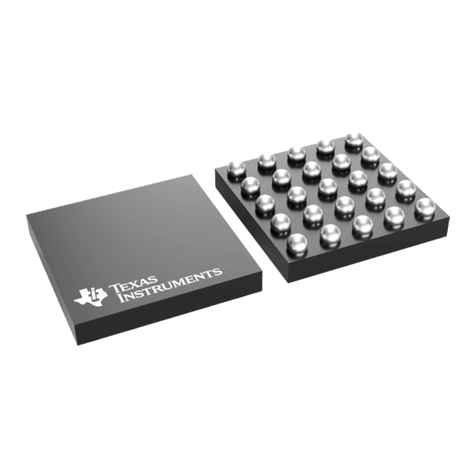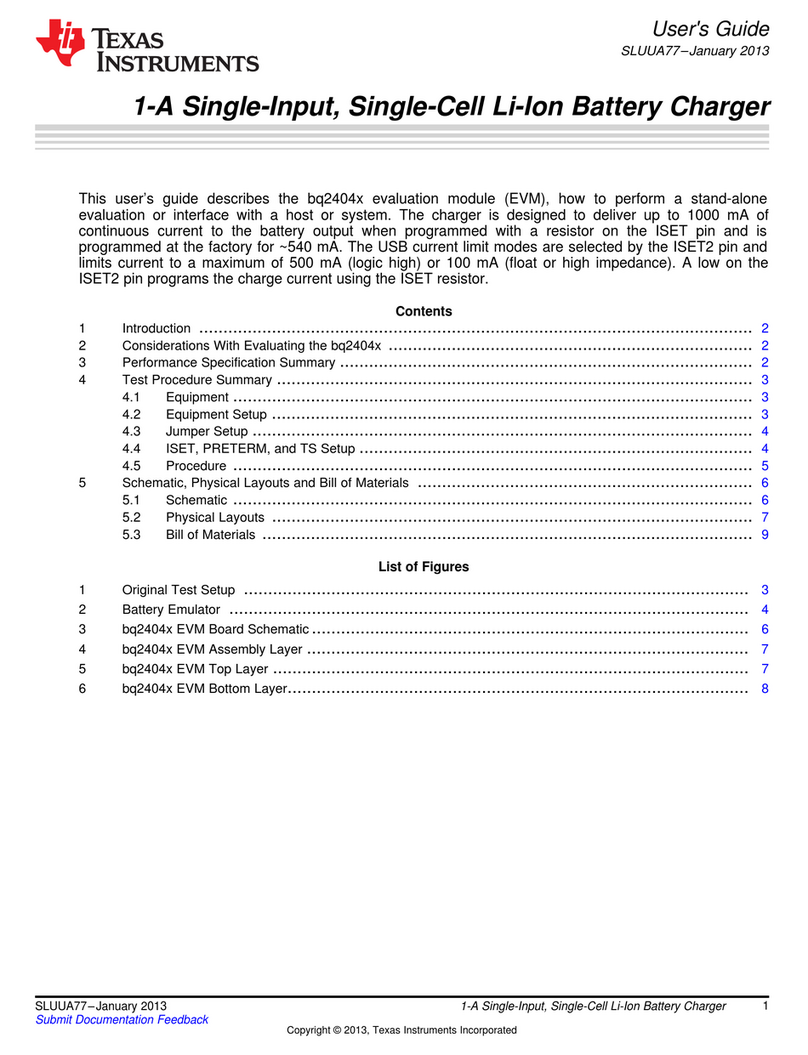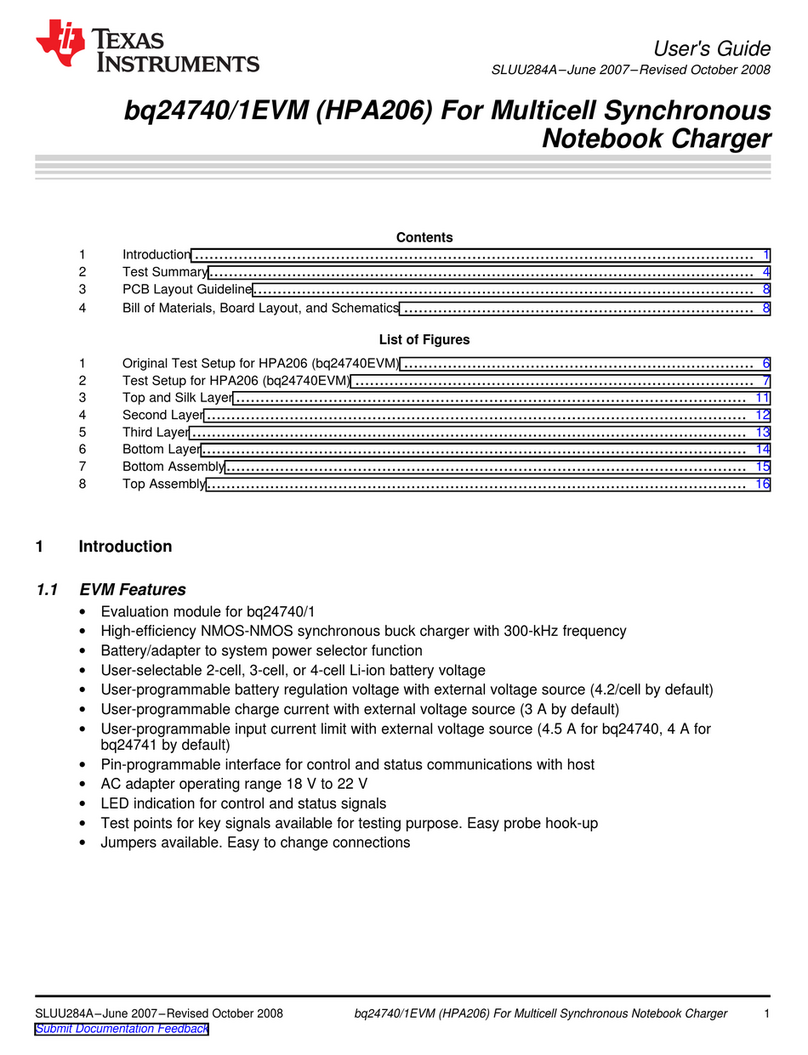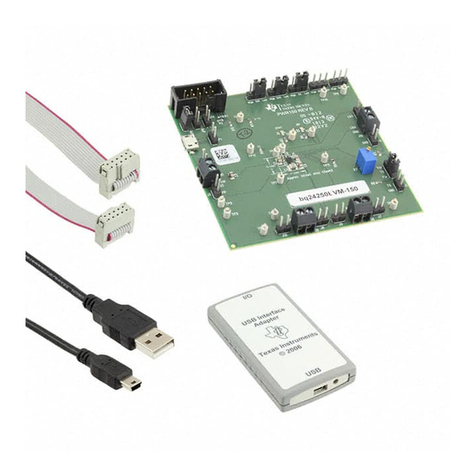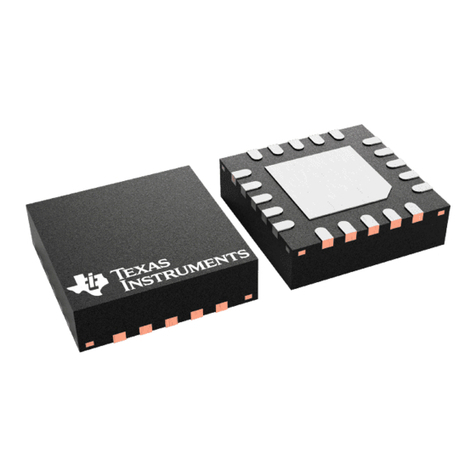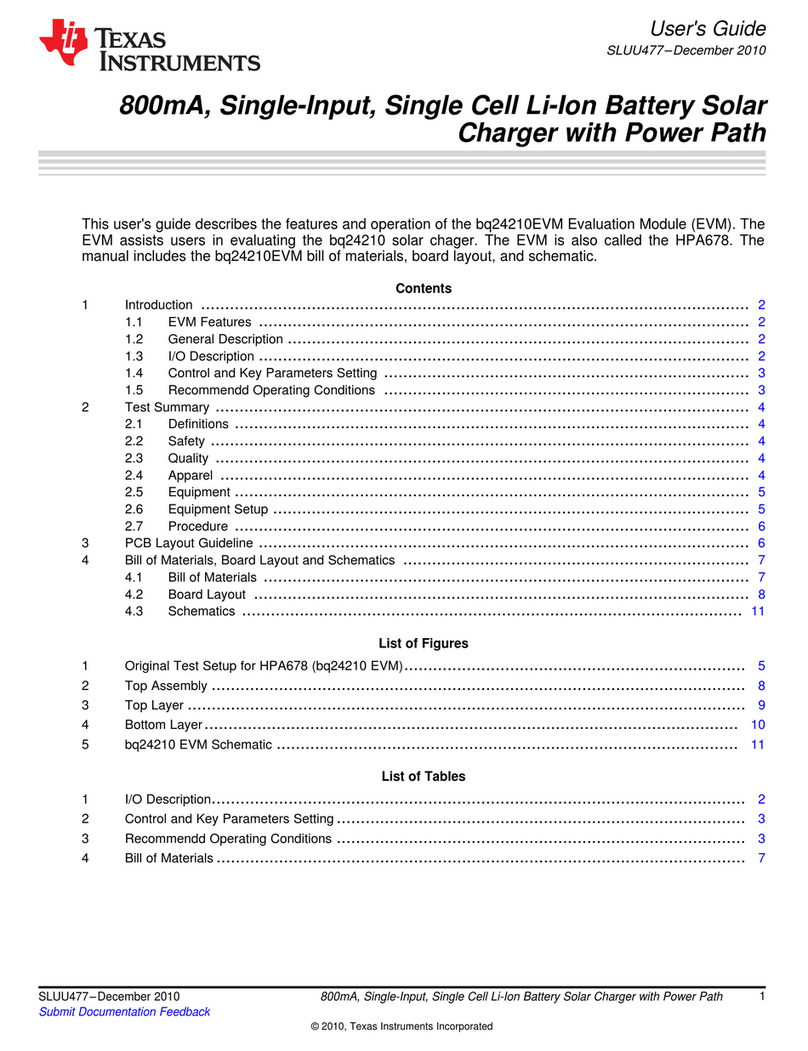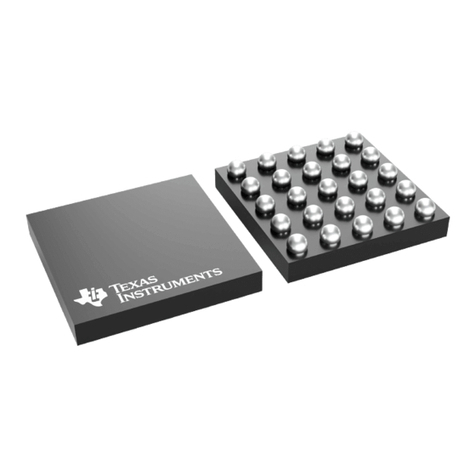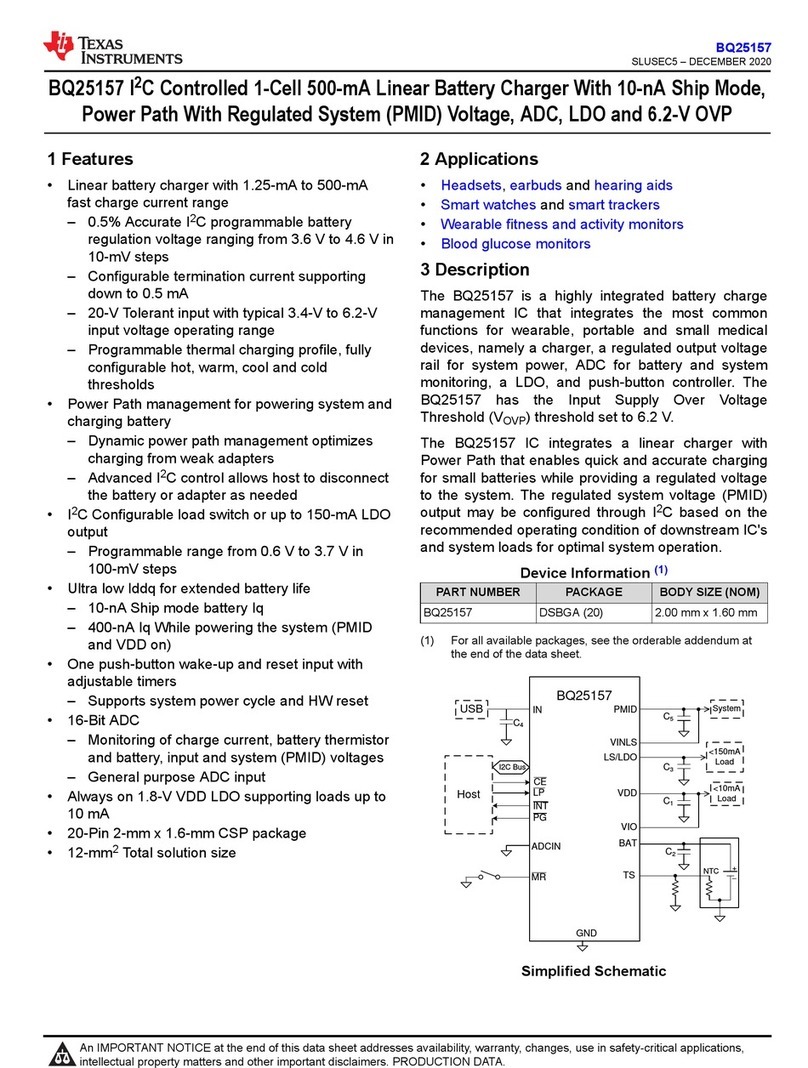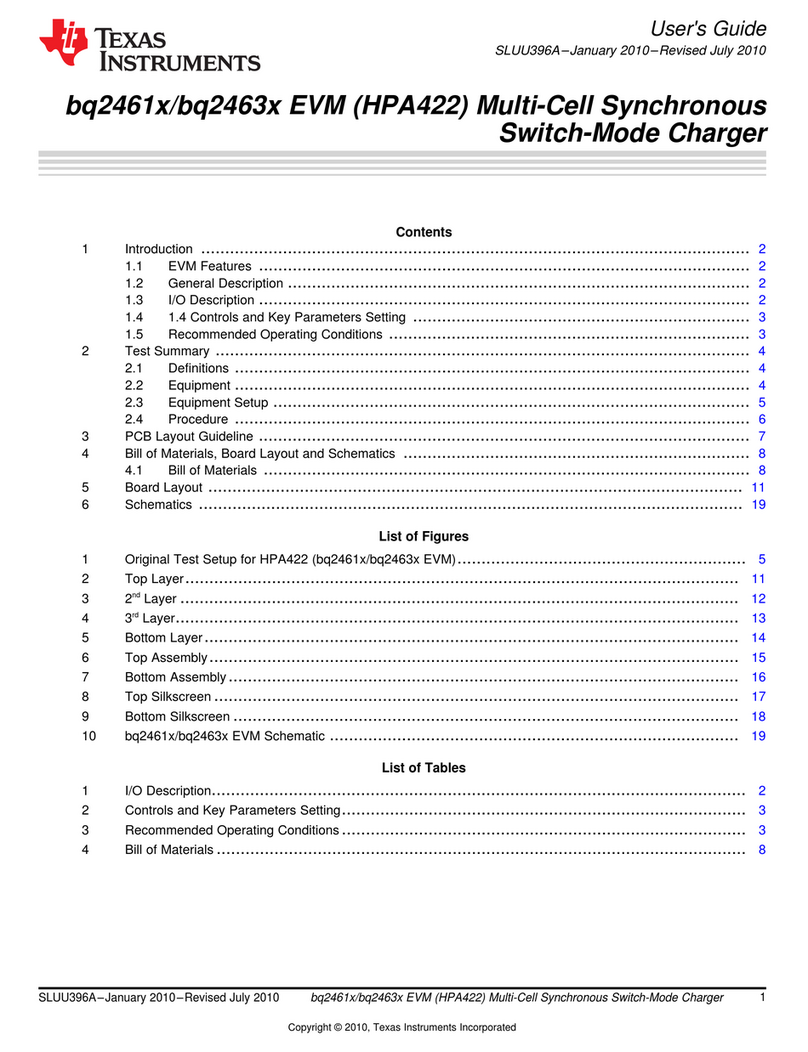
8.4 Thermal Information
THERMAL METRIC(1)
BQ25123
UNITYFP (DSBGA)
25 PINS
RθJA Junction-to-ambient thermal resistance 60 °C/W
RθJC(top) Junction-to-case (top) thermal resistance 0.3 °C/W
RθJB Junction-to-board thermal resistance 12 °C/W
ψJT Junction-to-top characterization parameter 1.2 °C/W
ψJB Junction-to-board characterization parameter 12 °C/W
RθJC(bot) Junction-to-case (bottom) thermal resistance N/A °C/W
(1) For more information about traditional and new thermal metrics, see the Semiconductor and IC Package Thermal Metrics application
report.
8.5 Electrical Characteristics
Circuit of Figure 8-1, V(UVLO) < VIN < V(OVP) and VIN > V(BAT) + V(SLP), TJ = –40 to +85°C and TJ = 25°C for typical values
(unless otherwise noted)
PARAMETER TEST CONDITIONS MIN TYP MAX UNIT
INPUT CURRENTS
IIN Supply current for control
V(UVLO) < VIN < V(OVP) and VIN > V(BAT) + V(SLP) PWM Switching,
–40°C < TJ < 85°C 1 mA
V(UVLO) < VIN < V(OVP) and VIN > V(BAT) + V(SLP) PWM NOT
Switching 3 mA
0°C < TJ < 85°C, VIN = 5 V, Charge Disabled 1.5 mA
I(BAT_HIZ)
Battery discharge current
in High Impedance Mode
0°C < TJ < 60°C, VIN = 0 V, High-Z Mode, PWM Not Switching,
V(BUVLO) < V(BAT) < 4.65V 0.7 1.2 µA
0°C < TJ < 60°C, VIN = 0 V, High-Z Mode, PWM Not Switching,
V(BUVLO) < V(BAT) < 6.6 V 0.9 1.5 µA
0°C < TJ < 60°C, VIN = 0 V or floating, High-Z Mode, PWM
Switching, No Load 0.75 3.5 µA
0°C < TJ < 85°C, VIN = 0 V, High-Z Mode, PWM Switching,
LSLDO enabled 1.35 4.25 µA
I(BAT_ACTIVE)
Battery discharge current
in Active Battery Mode
0°C < TJ < 85°C, VIN = 0 V, Active Battery Mode, PWM
Switching, LSLDO enabled, I2C Enabled, V(BUVLO) < V(BAT) <
4.65 V
6.8 12 µA
0°C < TJ < 85°C, 0 < VIN < VIN(UVLO), Active Battery Mode, PWM
Switching, LSLDO disabled, I2C Enabled, /CD = Low, V(BUVLO) <
V(BAT) < 4.65 V
6.2 11 µA
I(BAT_SHIP)
Battery discharge current
in Ship Mode 0°C < TJ < 85°C, VIN = 0 V, Ship Mode 2 150 nA
POWER-PATH MANAGEMENT and INPUT CURRENT LIMIT
VDO(IN-PMID) VIN – V(PMID) VIN = 5 V, IIN = 300 mA 125 170 mV
VDO(BAT-
PMID)
V(BAT) – V(PMID) VIN = 0 V, V(BAT) > 3 V, Iff = 400 mA 120 160 mV
V(BSUP1)
Enter supplement mode
threshold V(BAT) > V(BUVLO)
V(PMID) <
V(BAT) – 25
mV
V
V(BSUP2)
Exit supplement mode
threshold V(BAT) > V(BUVLO)
V(PMID) <
V(BAT) –
5mV
V
I(BAT_OCP)
Current limit, Discharge
Mode V(BAT) > V(BUVLO) 0.85 1.15 1.35 A
I(ILIM)
Input current limit Programmable Range, 50-mA steps 50 400 mA
Maximum Input current
using ILIM
K(ILIM) /
R(ILIM)
IILIM accuracy IILIM
accuracy
50 mA to 100 mA –12% 12%
100 mA to 400 mA –5% 5%
www.ti.com
BQ25123
SLUSCZ6A – JANUARY 2018 – REVISED MAY 2021
Copyright © 2021 Texas Instruments Incorporated Submit Document Feedback 7
Product Folder Links: BQ25123
